Pharmacokinetics
1/71
There's no tags or description
Looks like no tags are added yet.
Name | Mastery | Learn | Test | Matching | Spaced |
|---|
No study sessions yet.
72 Terms
What does the ADMA process apply to?
All drugs administered to the patient, regardless of the administration route
Although, the absorption phase is bypassed with intravenous administration
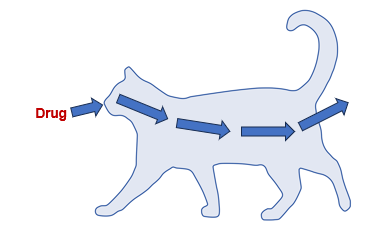
What does ADME stand for?
A - Absorption
D - Distribution
M - Metabolism
E - Excretion
Absorption
Site of administration to systemic circulation (bloodstream)
The route of transmission will have an impact on the ..
Absorption - the path of where the medicine has been administered and when it is in the bloodstream
Absorption varies with ..
Different drugs
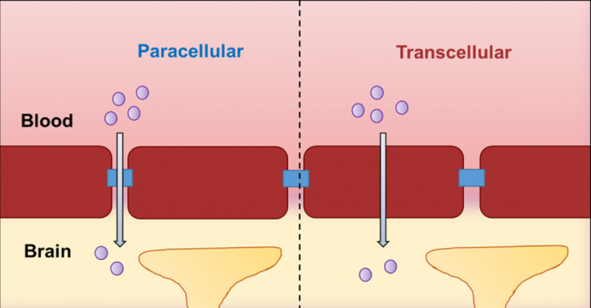
Paracellular barrier
For very small drug particles
Through the tight junctions between cells
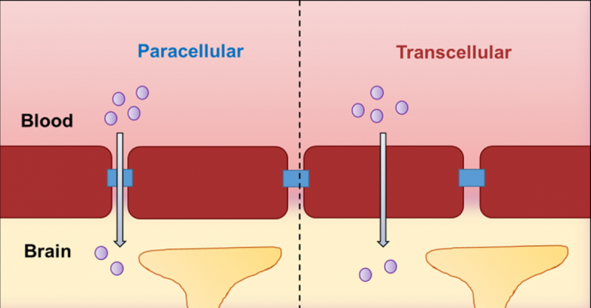
Transcellular barrier
Through the cellular membrane
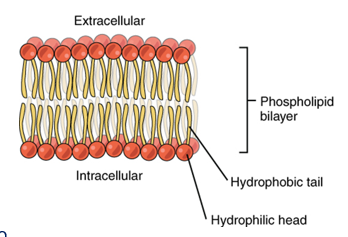
Crossing cell membranes
Direct/simple diffusion
Transmembrane carrier protein - Facilitated diffusion + Active transport
Other mechanisms - Pinocytosis, Phagocytosis, Aqueous pores
What drugs use passive/direct diffusion in absorption?
Lipophilic drugs
What drugs use Transmembrane carrier proteins in absorption?
Hydrophilic drugs
Aqueous pores allow ..
Fluids to transfer to one side of the cell membrane to the other
To cross a cell membrane, a drug must be
Lipophilic
Lipophilic - ‘Fat loving’
Fat soluble - dissolves readily in fat
Non-polarised
Non-ionised
Lipophilic drugs can pass through cell membranes due to ..
Their solubility in membrane bilayers
Hydrophilic - ‘Water loving’
Water soluble - dissolves readily in water
Polarised
Ionised
What do hydrophilic drugs require in relation to absorption?
A carrier
Lipophilic or hydrophilic nature affects pharmacokinetic properties, such as ..
Absorption
Distribution
Excretion
What is the concentration gradient for simple/direct diffusion?
Gradient from High → Low
The rate of diffusion depends on ..
Concentration gradient
Drug molecule size
Lipophilicity
Temperature
Thickness of membranes
The larger the concentration gradient ..
The quicker the drug molecule will diffuse through it
Small drug molecules will pass through the membrane .. than large drug molecules
Quicker
Drugs of a high lipophilic nature, will pass through the membrane (1), whereas hydrophilic drugs will (2)
1 - Quicker
2 - Not pass through
Absorption - If the temperature increased, this provides increased energy which means the drug molecules ..
The drug molecules will have quicker movement through the membrane
If the membrane is thin, the drug molecules will pass though .. than if it was thick
Quicker
Carrier proteins (transmembrane) - this mechanism is required for ..
Absorption of hydrophilic drugs
Active transport
Drug molecules move against a concentration gradient and energy is required (ATP). The drug molecule changes shapes, gets through the membrane by binding to the carrier protein then reverts to original shape once it has passed through
The rate of diffusion (for hydrophilic drugs) is affected by ..
The number of carrier proteins - If there are lots of drug molecules, but not many carrier proteins, diffusion will be slower (and vice versa)
Factors which can affect absorption are ..
Administration route
Drug formulation
Method of crossing membranes
Lipophilic:Hydrophilic nature
Environmental pH
Tissue perfusion
Blood supply to the tissue can affect absorption. In a highly perfused area (e.g. a muscle) there is .. in contrast to a poorly perfused area (e.g. subcutaneous tissue)
Less distance for the drug to diffuse through
Bioavailability
The percentage (%) if administered drug which reaches the bloodstream after administration
Bioavailability - Indicated by a decimal and the letter ‘f’ or ‘F’ (fraction), for example ..
1.0F = 100% bioavailability (100% of the drug successfully absorbed)
0.25f = 25% bioavailability
0.50f or 0.50F = 50% bioavailability (50% of the drug is successfully absorbed)
Drugs that are administered intravenously have a 100% bioavailability, why is this?
The drug has been administered directing into the bloodstream (100% of the drug is absorbed)
The presence of food within the gastrointestinal tract when ..
Administering oral drugs
Drugs administered orally can be affect by ..
First-pass metabolism
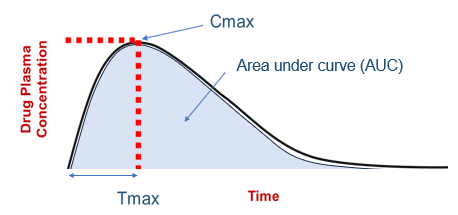
Cmax
The highest (peak) plasma drug concentration that is reached after administration of a drug dose
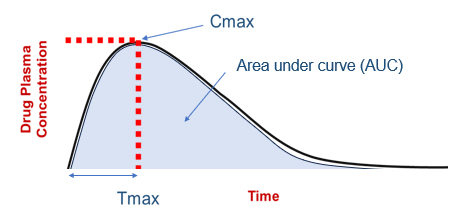
Tmax
The time at which the peak plasma drug concentration (Cmax) is reached
Area Under Curve (AUC)
The area under the plasma drug concentration which reflects the actual exposure to a drug after administration - This is equal to the bioavailability
After abruption, the drug needs to be ..
Distributed to the target site
Volume of distribution (Vd) - Tissue penetration of the drug, is dependent on ..
Perfusion
Capillary wall permeability - Paracellular, Transcellular
Protein binding
Vd is a pharmacokinetic value that provides an ..
Approximation of the extent to which a drug is distributed throughout the body. It is determined by looking at the concentration of a drug in the blood shortly after drug administration.
The larger the Vd, the more tissues and body compartments are penetrated, meaning the concentration of the drug in the blood is ..
Lower
The smaller the Vd, fewer tissues and body compartments are penetrated, meaning the concentration in the blood is ..
Higher
If an animal is overweight or obese, the Vd is not necessarily larger because ..
Some drugs may not readily pass into the fat - this is why dosing on bodyweight is not always ideal and instead, dosing should be based on ‘normal/healthy/ weight
Distribution is responsible for what in regards to IV injections?
The rapid fall in drug concentration after IV injection.
The half life of a drug will be .. if the drug has a small Vd
Short
The half life will be .. if the drug is widely distributed through-out the body (large Vd)
Long
Distribution barriers
Blood brain barrier (BBB)
Placenta
Testicles
Protein binding
A protein-bound drug will bind to albumin or globulin → holds drug in circulation
Protein molecules are large - cannot easily pass into tissues
Bound drug is generally inactive (Just being carried around!)
Free drug is active - can move into tissues and have an effect
Bound drug is not metabolised/excreted
An equilibrium exists between bound and free drug
Why might protein binding proportion be relevant if the animal is hypoproteinaemic or if the animals is on multiple medicines which are highly protein bound?
Binding sites could be overwhelmed leading to an overdose
What does metabolism aid?
Detoxification (proactive role) and elimination
What is metabolism?
Conversion from one chemical entity to another (changing the drug molecule)
Where does metabolism mostly occur?
In the liver
Apart from the liver, where can metabolism occur?
In the gastrointestinal tract and respiratory tract
Metabolism
Biotransformation
Conversion from one chemical entity to another (changing the drug molecule)
Aids in detoxification (proactive role) and elimination
Does not always render the drug inactive
Mostly occurs in the liver
Metabolism - Phase I
Original drug molecule chemically transformed by oxidation, reduction and/or hydrolysis → produces a metabolite (more hydrophilic)
Metabolism - Phase II
Metabolite combined with anther chemical (sulphate, glucuronic acid) → conjunction
During Phase II of metabolism, what does reduced bioactivity mean?
It cannot be reabsorbed
During Phase II of metabolism, what does easier to excrete mean?
More water soluble
What enzyme involved in phase II (of metabolism) reactions, do cats not have?
Glucuronyl transferase - linked to paracetamol toxicity
What organs are involved in excretion of drugs?
Kidneys
Liver
Lungs
Hair
Milk
Saliva
Sweat
Excretion
Getting the drug out of the body
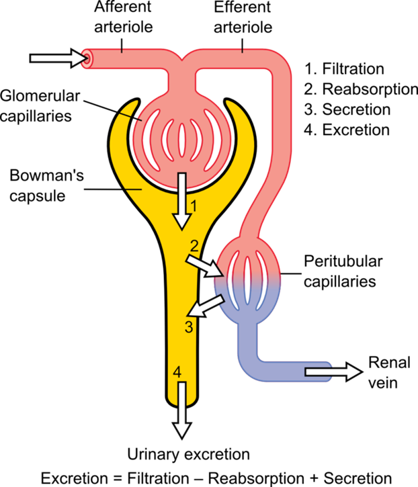
Renal excretion
Glomerular filtration
Passive tubular resorption
Active tubular secretion
Some drugs can alter the pH of ..
Urine
Excretion - From the kidneys, then into the ..
Into the urine
Excretion - From the liver into the bile, then bile into the ..
Faeces
Excretion - From the lungs, then out through ..
Expiration
Excretion - From the hair, in the ..
Keratin
What can influence the excretion rate?
Hydration status
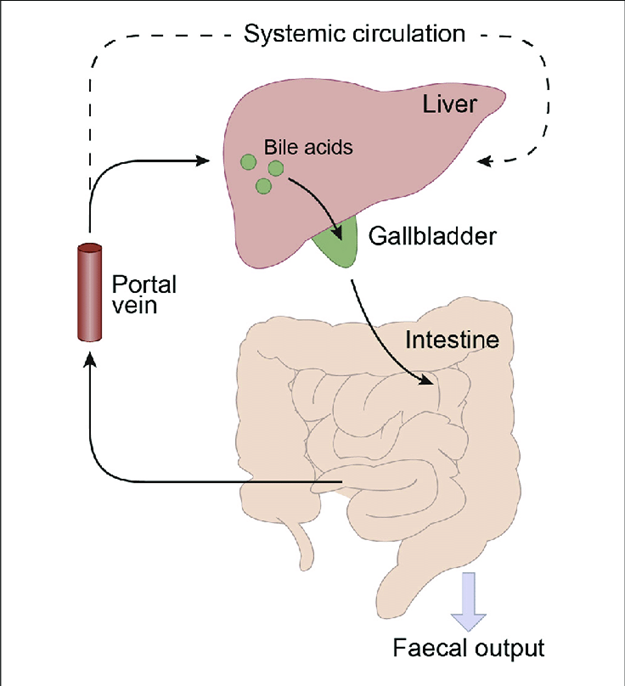
Hepatic excretion
Either metabolised by liver first or excreted straight into the bile
Bile excreted via the intestines
Bile excreted out in the faeces
Potential enterohepatic recycling
The liver can excrete drugs, how does this happen?
Drug molecules will passively diffuse into the liver cells
Move into the bile unchanged or metabolised in the liver and then moved into the bile
Then excreted into the intestines and out in the faeces
If enterohepatic recycling occurs this means that the drug is ..
Excreted via the bile into the intestines. Then it is reabsorbed from the intestines into the systemic circulation again - This can prolong the action of the medicine if the metabolites are active
Pharmacokinetics - an overview
‘The path of medicine through the body’ or ‘what the body does to the medicine’
Absorption, Distribution, Metabolism and Excretion
Drug specific features will be investigated during medicine development and licensing